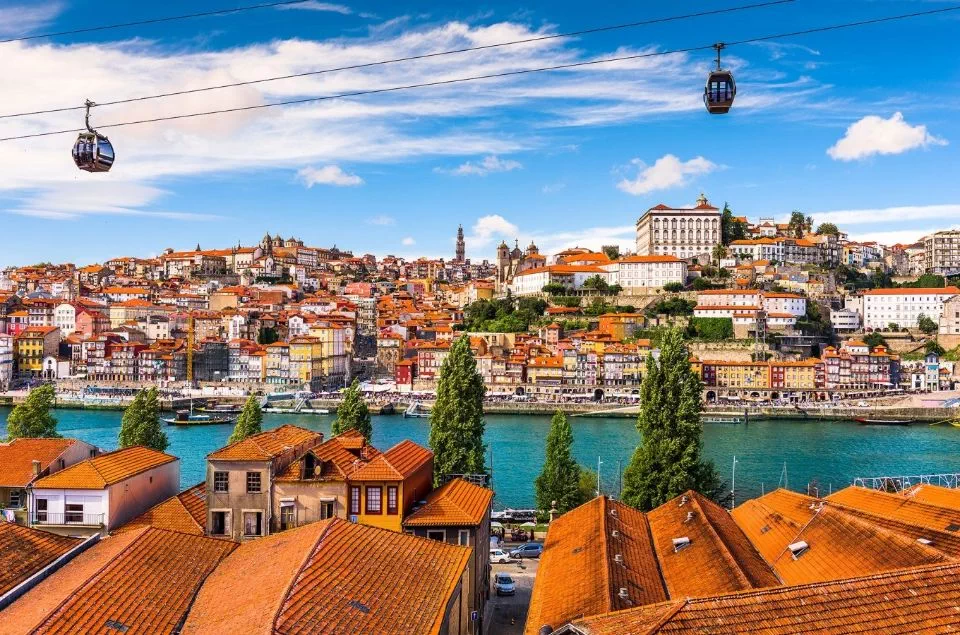Experience Venice - Italy
Art It is hard to hear the word Venice witho...
By Susan Giles2657

0

With its rustic charm and intimate urban vibes, Lisbon is one of the quaintest cities in Europe. As a historical trade hub and a gateway to the continent, it ranks as a top destination for a summer vacation, attracting millions of curious visitors from all over the globe.
From picturesque beaches to authentic landmarks and tasty cuisine, this iconic town has something for everyone. Check out this dedicated guide that will take you through the magic of Lisbon and provide valuable knowledge and tips for your next trip, alone, or in a group!
City Facts
Situated on Portugal’s majestic Atlantic coast, Lisbon is the second oldest capital in Europe (after Athens; it even predates Rome!). The official language is Portuguese and the local currency is the Euro. The Lisbon we know and see today was mostly rebuilt after a ravaging earthquake in 1755; the Prime Minister and national figure Marquês de Pombal took charge of the city’s new urban layout, featuring a grid street plan and earthquake-proof constructions.
The mix of old and new gives the city a distinct, alluring identity that’s rarely seen elsewhere. A walk around the historical neighborhoods of Baixa, Alfama, and Bairro Alto will have you mesmerized at the town’s unique charisma. The Lisboetas (or Alfacinhas) are notoriously warm and friendly people who welcome visitors with open arms.
Climate
The Portuguese capital enjoys a nice subtropical/Mediterranean-style climate. It’s characterized by hot, dry, and long summers, while winters are typically short and mild. Lisbon experiences plenty of sunlight throughout most of the year, making it one of the sunniest cities in Western Europe. In summer, temperatures can easily reach 35°C (95°F) during the day, while winters get as low as 10°C (40°F). Seeing rain or snow in that region is quite rare.
When to Visit
The ideal time to visit Lisbon is between March and October, when the weather is the most pleasant. Nevertheless, the July-August peak season abounds with hordes of international tourists, which can overwhelm visitors who prefer a peaceful urban experience. September will be a great time to enjoy the capital without the crowds and the scorching heat, while June will prove ideal for those looking to enjoy a trip to the beach, partake in local festivities, concerts, and various open-air events.
Getting Around
Despite being built on seven hills, walking is by far the best way to get around Lisbon, soak in the atmosphere, and discover its hidden gems. The distinctive San Francisco-style trolleys are also a local staple and a nice way to explore the old districts. You’ll find that Lisbon is a rather compact city, so long commutes (over 30 minutes) are not very frequent.
However, for longer distances, the capital is equipped with a solid public transportation system (metros, buses), which is clean and one of the most affordable in Europe. Of course, there are always black-and-green taxis, Uber, and Cabify ride-sharing services for late rides or suburban getaways.
Accomodations and Safety
As any trendy European destination, finding accommodations in Lisbon depends on the choice of neighborhood, seasonality, length of stay, and budget. Solo backpackers will want to take advantage of the many hostels that go for around 15-25€/night. The historical city center abounds with these cheap options while offering close proximity to amenities like shops, restaurants, bars, public parks, and transportation.
Those planning longer stays will want to opt for an AirBnb booking, or a 4 or 5-star hotel. For matters of convenience, the best areas to stay at include São Sebastião, Marquês, Baixa, and Príncipe Real. These neighborhoods are considered safe, but tourists aren’t always safe from pickpockets and profiteers who roam around these popular districts.

Must-Visits
With such a rich history and patrimony, the Portuguese capital boasts countless historical monuments, palaces, castles, churches, and squares that are definitely worth a detour. An unmissable stop on a Lisbon tour is the Praça de Comércio, the city’s majestic and vast harbor-front square, once the site of a royal palace. Built during Portugal’s golden age, the Belém Tower is the city’s landmark par excellence.
This fortification served as the embarkation point for Portuguese explorers back in the 16th century, and is a marvel of Manueline architecture. The impressive Jerónimos Monastery, also a popular urban landmark and home to two museums, is a must-see for anyone who visits Lisbon.
Last, but certainly not least, the Castelo de S. George is the capital’s largest and most visited castle, offering a superb panorama over the city. In any case, getting a touristic map will help navigate all of Lisbon’s historical marvels.
Cultural Attractions
Alongside all these landmarks, Lisbon features plenty of attractions including museums, galleries, parks, and entertainment venues that will make for a well-rounded and exciting trip. There’s no shortage of beautiful green spaces throughout the capital; the Parque Eduardo VII, Jardim de Estrella, Parque Florestal de Monsanto, and Lisbon Zoo are all worthy of a visit on a sunny day.
For museum lovers, the National Azulejos Museum dedicated to the city’s glazed tiles designs is a must-see for art aficionados. There’s also the MAAT (Museum of Art, Architecture and Technology), a marvel of contemporary architecture overlooking the city’s majestic bridge. An honorable mention goes to the Museu de Fado (traditional music) and Coach Museum, which will acquaint visitor’s with the city’s splendid cultural patrimony. Also, did you know that the Lisbon Oceanarium is the largest in Europe? An absolute show-stopper for anyone interested in maritime life.
Shopping Destinations
The good news is that Lisbon is one of the least expensive cities in Western Europe, making it an ideal place for a shopping spree. Situated in Príncipe Real, Embaixada is the city’s best retail destination, featuring fashion and design pieces in a gorgeous historical venue. There are also lots of shopping streets, including Avenida da Liberdade, Rua Garrett, and Alfama’s niche shops.
The city also features malls and department stores such as Colombo, the Centro Vasco de Gama, and El Corte Inglés for a great shopping experience. There are plenty of markets to buy anything from clothes, artisanal goods, design objects, and more. If you’re feeling lucky, head to Casino Estoril, also one of the largest in Europe.
Local Food Scene
Finally, it wouldn’t be fair to wrap up without talking about food! As it happens, Lisbon is home to a vibrant and tasty culinary scene that will delight any foodie. Local specialties include dishes with cod fish (bacalhau), grilled sardines (sardinhas grelhadas), and pastéis da nata, a delicious sweet pastry consisting of eggs, custard, and cinnamon.
Foodies should head to the districts of Baixa, Chiado, Bairro Alto, Penha de França, Campo de Ourique, and Príncipe Real. There, you’ll find an abundance of lunch and dining options, cheap eateries and food joints, along with many bars to wash it all down.
All in all, it isn’t hard to see why the Portuguese capital is such an attractive holiday destination. The charm of its black-and-white cobbled streets is only rivaled by the majesty of its landmarks, the beauty of its parks, and the generosity of its people. Wherever you go in Lisbon, you’re bound to find something to explore, a place to visit, a store to shop, or a joint to eat. For an affordable and truly memorable vacation, Lisbon deserves a spot on any traveler’s bucket list!
Updated 4 years ago